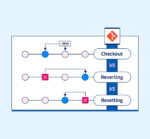Introductions
It is the HTML which makes the language as the base language of the world web. It matters in pages whether building a personal webpage or developing an interactive and complex application. Structuring a web page with HTML is the first step to learn. This will take you through understanding the various basic components of HTML document, common tags, and the best practices for writing clear and easy-to-read code.
1. Understanding the Role of HTML
What is HTML?
What is HTML?
HTML stands for HyperText Markup Language. This meaning describes that it is the standard way in creating and defining the structure of web pages. It does not involve styling (that is from CSS) or makes things happen (which requires JavaScript), defining instead the layout and content of the web page through systems of elements and tags.
Thus every HTML document essentially becomes just a text file with a .html extension and is read by browsers in order to display the content in a better-organized format.
What makes it important to learn HTML?
HTML is the foundation on which the whole network stands. Be it a blog, a social network, or an online shopping site; each and every webpage is HTML based. Here is why you should learn HTML:
- Basis of Web Development: Entry-level possibility for learning other web technologies such as cascading style sheets (CSS), JavaScript, and frameworks like React or Angular.
- Control Over Content: Understanding HTML gives you the power to directly edit and optimize your website’s layout and SEO.
- Universally Understandable: Any browser, any kind of device or size of the screen, understands HTML. Which makes it a universal language on this web.
2. The Basic Structure of an HTML Document
Every HTML page follows a standard skeleton:
| <!DOCTYPE html><html lang=”en”><head> <meta charset=”UTF-8″> <meta name=”viewport” content=”width=device-width, initial-scale=1.0″> <title>Your Page Title</title></head><body> <!– Page content goes here –></body></html> |
- <!DOCTYPE html>: Same as declaring the document as HTML5.
- <html>: This is the root element; it is supposed to include a lang attribute for the specification of the page’s reading language.
- <head>: Contains all the metadata—character encoding, page title, links to CSS files, and other resources.
- <body>: The portions have the visible content in it: text, images, links, and so on.
3. Essential HTML Elements
3.1 Headings and Text
- Headings (<h1> through <h6>): Identify titles and section headers. The most significant is <h1>. Conform to sequential order to show the content hierarchy.
- Paragraphs (<p>): An encapsulation for blocks of text.
| <h1>Welcome to My Site</h1><p>This is a paragraph explaining what my site is about.</p> |
3.2 Links and Images
- Hyperlinks (<a>): Create hyperlinks using this element. Use the href attribute to specify the target URL.
- Images (<img>): Used to insert an image, with src (source) and alt (alternative text) attributes provided.
| <a href=”https://example.com”>Visit Example.com</a><img src=”photo.jpg” alt=”A descriptive caption”> |
3.3 Lists
- An unordered list (<ul>) is complemented by an ordered list (<ol>), which lays out relative items in respective order.
- List items (<li>) define individual aspects of each entry.
| <ul> <li>First item</li> <li>Second item</li></ul> |
4. Semantic HTML for Better Structure
Semantic elements convey meaning beyond mere presentation:
- <header>, <footer>, <nav> – defines the page regions for headers, footers, and navigational links.
- <main> – defines the primary content that is unique to the page.
- <section>, <article>, <aside> – organize content into logically structured blocks.
| <header> <h1>Site Title</h1> <nav>…</nav></header><main> <article>…</article></main><footer>© 2025 My Site</footer> |
5. Attributes and Best Practices
- Attributes: Include more information in elements, for example the class, id, title.
- Indentation: Some consistent space-for instance, 2 or 4-indents can be employed for the readability.
- Lowercase Tags: To make it uniformity among elements and attributes adopt lowercase for the element and attribute.
- Self-closing Tags: Use HTML5 style for void elements <img /> and <br /> without a close tag.
6. Validating Your HTML
Implement the W3C Markup Validation Service to catch errors and also that your HTML is standard with the web.
Common Beginner Mistakes to Avoid
- Missing Closing Tags: Always close your tags to prevent any damages to your layout.
- Incorrect Nesting: For example: <div> inside a <p>.
- Excessive Usage of Non-Semantic Tags: Avoid plethora of <div> or <span> elements where semantic tags fit.
- Neglecting Accessibility: Always use alt attributes for images and also ARIA labels for complex elements.
7. Moving Forward: Styling and Interactivity
Once you structure your content with HTML, you actually can add in:
- CSS for styling (colors, layouts, typography).
- JavaScript for dynamic behavior (animations, form validation, API calls).
Link external CSS and JS files within the <head> or just before the closing </body> tag:
| <link rel=”stylesheet” href=”styles.css”><script src=”script.js” defer></script> |
Conclusion
Mastering HTML is the first milestone in web development. By understanding the basic document structure, essential tags, semantic elements, and best practices, you lay a robust foundation for any web project. From here, you can delve into CSS for beautiful designs and JavaScript for rich interactivity. Happy coding!









